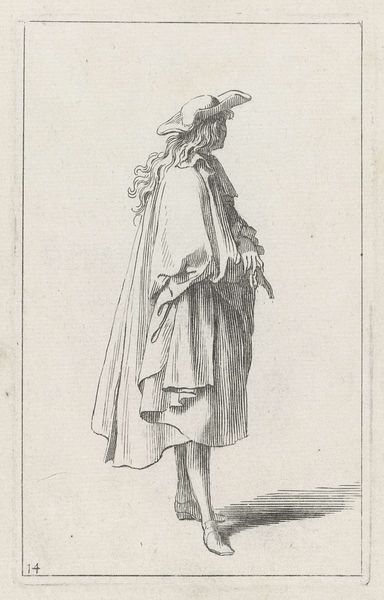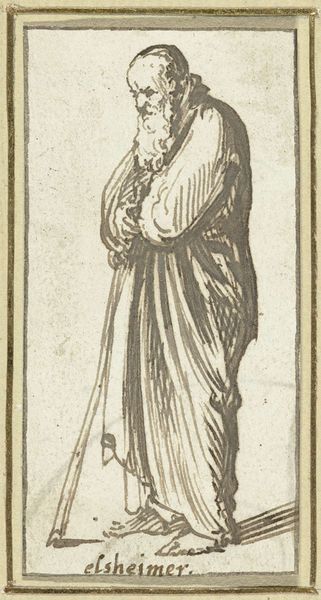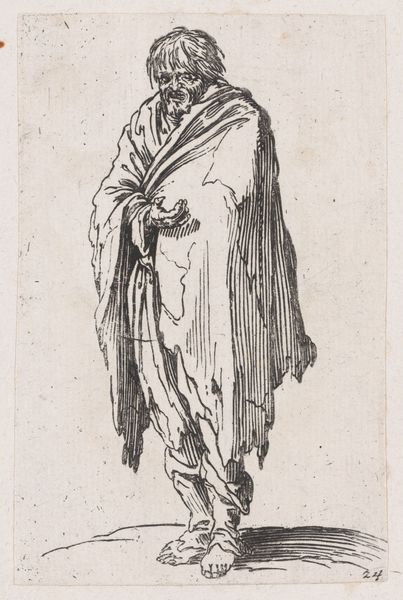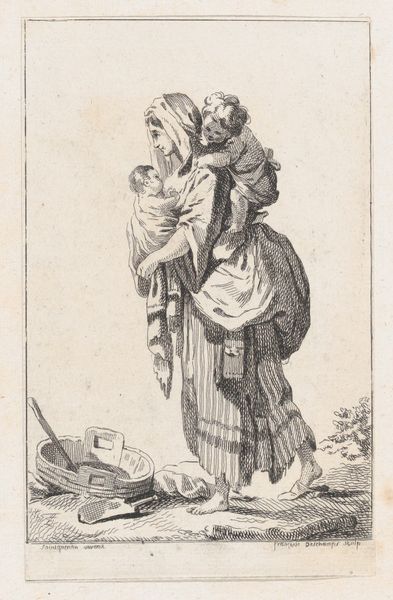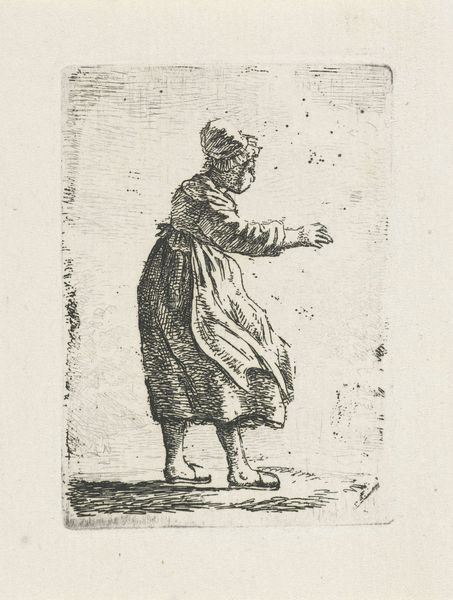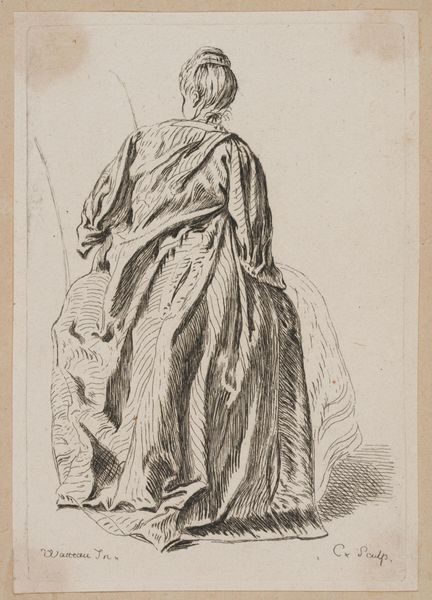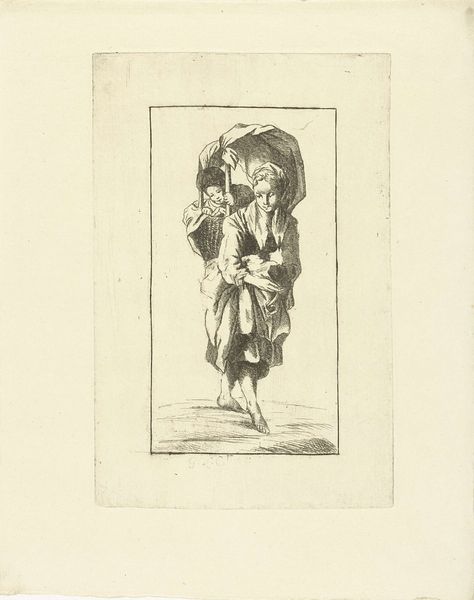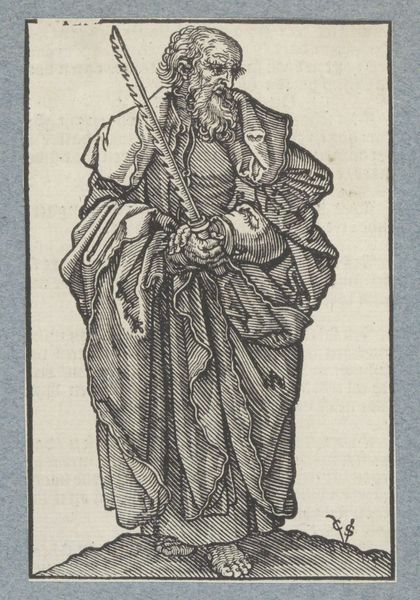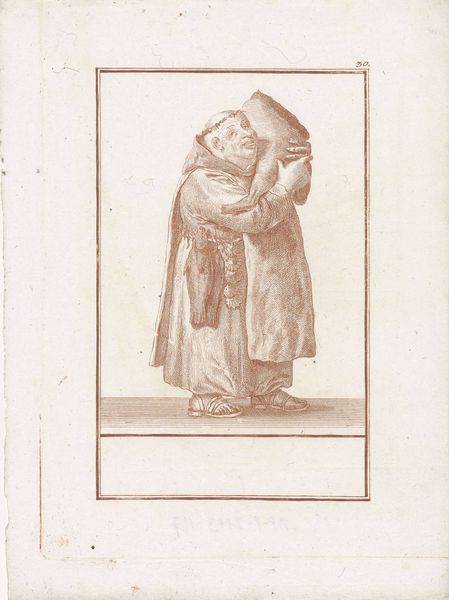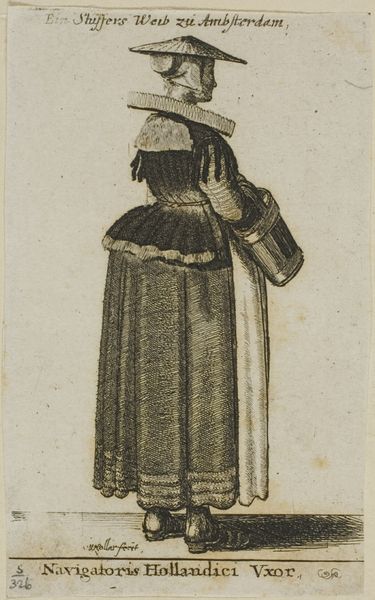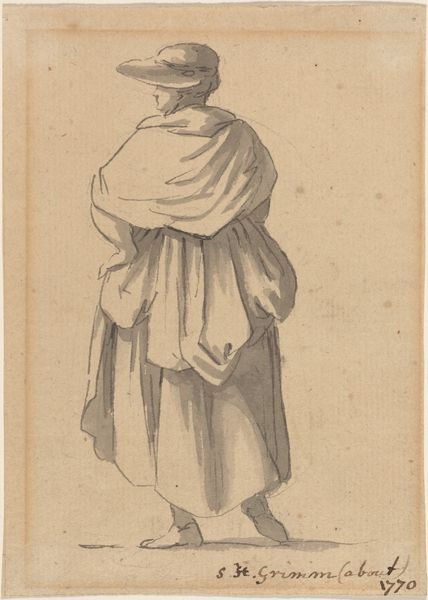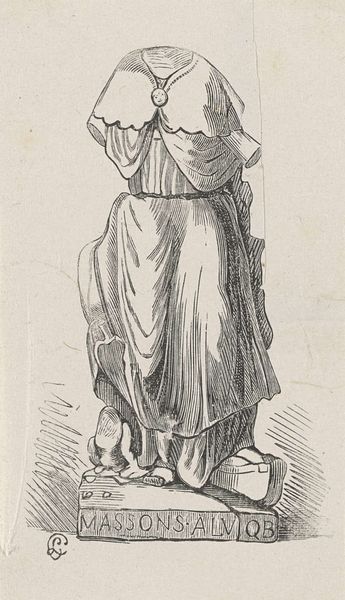
drawing, dry-media, graphite
#
portrait
#
drawing
#
landscape
#
figuration
#
dry-media
#
romanticism
#
graphite
Dimensions: height 88 mm, width 55 mm
Copyright: Rijks Museum: Open Domain
Curator: A solitary figure stands before us, seemingly lost in thought. There's a quiet stoicism in this image. Editor: Indeed. We are looking at "Reiziger met zak op de rug," which translates to "Traveler with bag on back," a graphite drawing by François Joseph Pfeiffer, created sometime between 1793 and 1835. It's a lovely example of the period’s romantic fascination with travel and the individual. Curator: The emphasis is absolutely on line and form here, isn't it? The graphite strokes meticulously define the drapery of his cloak and the texture of the bag he carries. Editor: And the lack of vibrant color definitely directs our attention toward form and light. Think about this in relation to social changes: at this point, increased infrastructure was transforming society, creating opportunities and, in parallel, a sense of dislocation, alienation. Is our anonymous wanderer part of this story? Curator: Absolutely. This was a time when artists started representing landscape and ordinary subjects differently, trying to depict a complex psychological state. We see some emphasis on shadow in this drawing, especially the way it grounds him and defines his forward movement, it would seem. Editor: The hat and cloak certainly add to his anonymity, yet paradoxically enhance a certain romantic individuality, wouldn't you agree? They obscure him, make him everyman, but give him a sort of nobility. Curator: I find it interesting that we, as modern viewers, interpret his journey through such a contemporary lens. At the time it was created, the work had much more to do with explorations of an idea rather than an actual travel experience. Travel served as a way of reflecting upon changes within society and one's personal relationships with place. Editor: I suppose both interpretations hold true, reflecting how the drawing bridges past and present sensibilities. Curator: Absolutely, the artist wanted to focus more on individual emotional interpretation of societal and historical changes. It’s easy to find that conveyed even centuries later through such careful form and balance. Editor: In the end, this modest drawing opens a doorway for questions related to exploration, solitude, identity, and a shifting society, quite an achievement using only graphite.
Comments
No comments
Be the first to comment and join the conversation on the ultimate creative platform.
